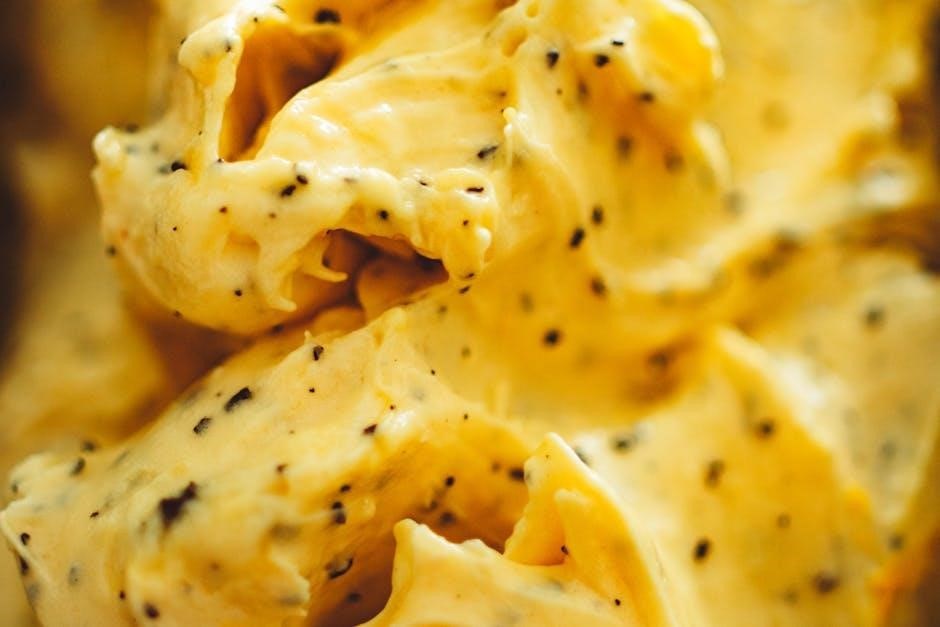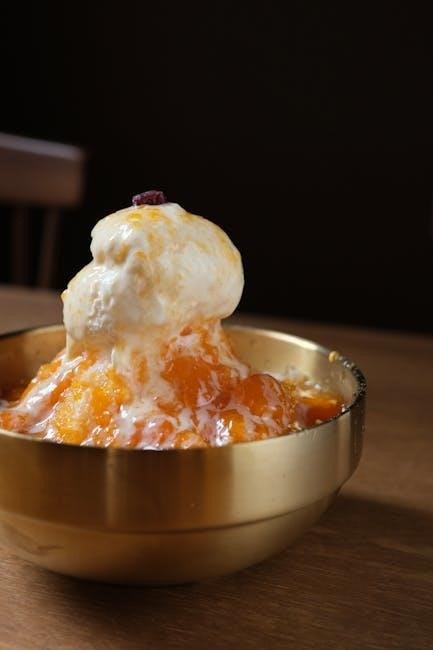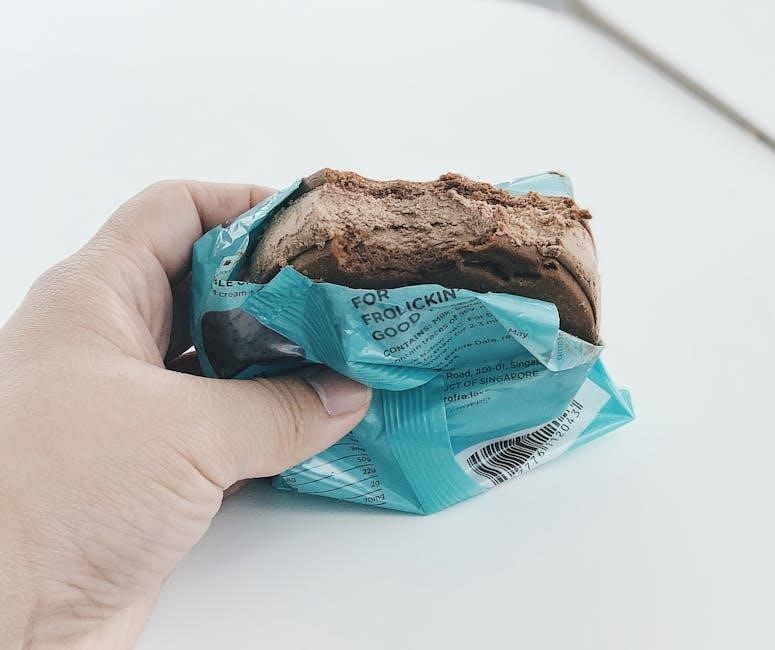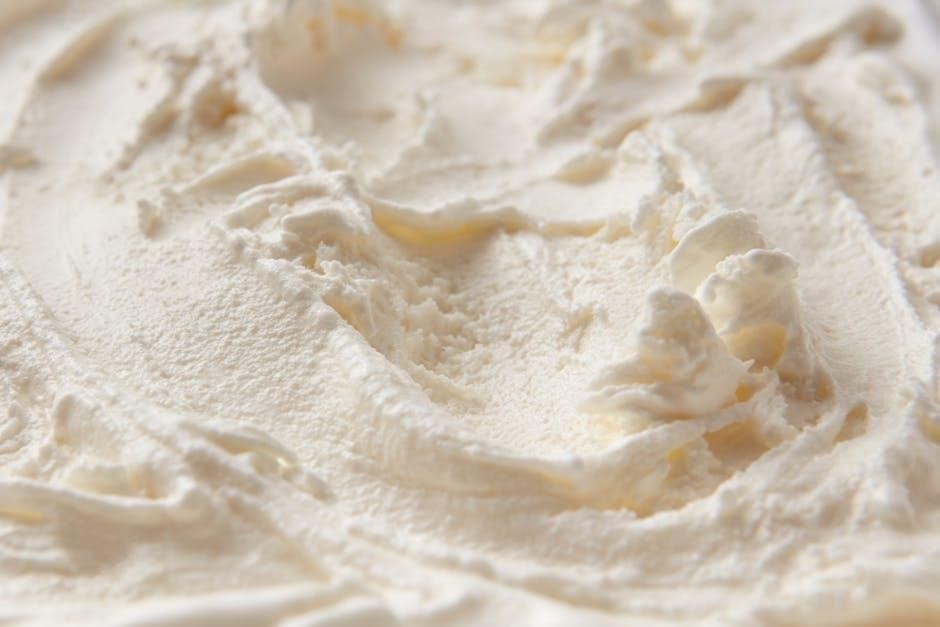Welcome to the Plantronics C054 Manual! This guide helps you understand your headset’s features, proper usage, and maintenance for an optimal experience․ Reading this manual ensures you maximize functionality and troubleshoot common issues effectively․ Thank you for choosing Plantronics for your audio needs․
Overview of the Plantronics C054 Headset
The Plantronics C054 is a sleek, wireless Bluetooth headset designed for seamless communication and multimedia experiences․ It combines advanced audio technology with user-friendly features, making it ideal for professionals and casual users alike․ The headset offers crystal-clear sound, noise-canceling microphones, and intuitive controls for managing calls and music․ Its lightweight, ergonomic design ensures comfort during extended use․ Compatible with smartphones, tablets, and computers, the C054 provides versatility for various applications․ This manual will guide you through its features, setup, and maintenance, ensuring you get the most out of your device․ Explore the sections ahead to discover how to optimize your Plantronics C054 experience․
Importance of Reading the Manual
Reading the Plantronics C054 manual is essential to fully understand your headset’s capabilities and ensure optimal performance․ It provides detailed insights into proper usage, safety guidelines, and troubleshooting tips․ By familiarizing yourself with the manual, you can avoid common mistakes, extend the product’s lifespan, and make informed decisions about maintenance․ The manual also outlines warranty terms and support options, ensuring you have all the resources needed for a seamless experience․ Investing time to read the manual will help you maximize your headset’s potential and enjoy a hassle-free user experience․ It serves as your comprehensive guide to getting the most out of your Plantronics C054․
Safety Precautions and Guidelines
Always handle the Plantronics C054 headset with care to avoid damage․ Avoid exposing it to extreme temperatures, moisture, or physical stress․ Keep the device away from water and ensure it remains dry during use․ When charging, use the provided charger and avoid overcharging, as it may cause overheating․ Adjust the volume to a safe level to protect your hearing․ Do not use the headset in environments where it could distract you or pose a safety risk․ Regularly inspect the headset for signs of wear and tear, and replace damaged parts promptly․ Follow these guidelines to ensure safe and optimal use of your Plantronics C054 headset․

Key Features and Benefits of the Plantronics C054
The Plantronics C054 offers extended battery life, superior sound quality, enhanced comfort, and seamless connectivity options, ensuring a premium audio experience for both calls and multimedia use․
Design and Comfort
The Plantronics C054 headset is designed with user comfort and durability in mind․ Featuring an ergonomic design, it ensures a secure fit and reduces pressure on the ears during extended use․ The lightweight construction and soft ear cushions provide all-day comfort, making it ideal for both professional and casual settings․ The headset’s sleek and modern aesthetic appeals to a wide range of users․ Its adjustable headband and pivoting ear cups allow for a personalized fit, ensuring comfort for various head shapes and sizes․ Built with high-quality materials, the C054 balances style and functionality, offering a reliable and comfortable audio experience for calls, music, and multimedia․
Sound Quality and Audio Performance
The Plantronics C054 delivers exceptional sound quality, ensuring clear and crisp audio for both calls and music․ With advanced noise-cancellation technology, it minimizes background noise, providing an immersive listening experience․ The headset features high-definition speakers that produce rich, balanced sound, making it ideal for multimedia use․ Its audio performance is further enhanced by digital signal processing, which optimizes sound clarity and reduces distortion․ Whether you’re on a call or streaming music, the C054 offers seamless audio reproduction․ The headset’s ergonomic design ensures comfort during extended use, allowing you to enjoy uninterrupted audio without fatigue․ This combination of premium sound quality and advanced audio features makes the C054 a versatile choice for professionals and music lovers alike․
Battery Life and Charging Options
The Plantronics C054 offers an impressive battery life, providing up to 24 hours of continuous talk time on a single charge․ The headset supports rapid charging, with a quick 15-minute charge delivering up to 2 hours of use․ It also features a convenient USB-C charging port for reliable and fast charging․ Additionally, the C054 is compatible with wireless charging pads, offering an effortless charging experience․ To maintain optimal battery health, ensure the headset is charged in a cool, dry environment and avoid overcharging․ The battery status indicator notifies you when it’s time to recharge, ensuring you stay connected without interruptions․ Proper charging habits will extend the lifespan of your headset’s battery, guaranteeing long-term performance and reliability․

Getting Started with the Plantronics C054
Getting started with your Plantronics C054 is simple and straightforward․ This section guides you through unboxing, charging, and pairing your headset for a seamless experience․
Unboxing and Accessories
Upon opening your Plantronics C054 package, you will find the headset, a set of ear tips in various sizes, a charging cable, and a quick start guide․ Ensure all items are included for optimal use․ The ear tips are designed for comfort and noise isolation, while the charging cable ensures convenient power management․ Additional accessories, such as a carrying case, may be available separately for added convenience․ Take a moment to inspect each item for damage and familiarize yourself with their purposes․ If any accessories are missing or damaged, contact customer support immediately to resolve the issue․ Properly organizing your accessories will enhance your overall experience with the Plantronics C054 headset․
Charging the Headset
Charging your Plantronics C054 headset is essential for ensuring uninterrupted use․ Locate the USB-C charging port on the headset and connect it to the provided cable․ Plug the other end into a USB power source, such as a wall adapter or computer․ The LED indicator will turn red during charging and switch to blue once fully charged, which typically takes 1-2 hours․ Avoid overcharging, as this may affect battery health․ If the headset is not in use, store it in a cool, dry place after charging․ Always use the original charger to prevent damage․ Proper charging habits will extend the lifespan of your headset and ensure optimal performance․
Pairing the Headset with Your Device
Pairing your Plantronics C054 headset with your device is a straightforward process that ensures seamless connectivity․ Start by activating pairing mode on your headset․ Typically, this involves holding down the call control button until the indicator light flashes red and blue․ Next, enable Bluetooth on your phone, tablet, or computer and search for available devices․ Select “Plantronics C054” from the list․ If prompted, confirm the pairing by entering the default passcode, usually “0000” or “1234․” Once connected, the indicator light will stop flashing, indicating successful pairing․ Your headset can pair with up to two devices simultaneously, allowing easy switching between calls and multimedia․ Ensure your device is within range for optimal performance․

Operating the Plantronics C054 Headset
Mastering your Plantronics C054 headset is simple! This section guides you through day-to-day operations, ensuring smooth functionality and optimal performance․ Explore controls, functions, and features confidently․
Basic Controls and Functions
The Plantronics C054 headset features intuitive controls designed for seamless operation․ The power button is located on the earpiece, allowing you to turn the headset on or off with a simple press․ Volume controls are situated on the side for easy adjustment․ The multifunction button handles call management, including answering, ending, or rejecting calls․ Additionally, the headset includes a mute button for quick audio muting during calls․ The LED indicator provides visual feedback for pairing, charging, and power status․ To pair the device, press and hold the multifunction button until the LED flashes blue․ For optimal use, familiarize yourself with these controls to enhance your audio experience․ Proper use ensures efficient handling of calls and multimedia functions․ Always refer to the manual for detailed guidance on advanced features․
Using the Headset for Calls
To make a call, ensure your Plantronics C054 is paired with your device․ Use the call button to dial or answer calls․ The noise-canceling microphone ensures clear voice transmission, even in noisy environments․ When a call comes in, you’ll hear a notification tone, and the LED will flash․ To answer, press the call button; to decline, press and hold it․ Adjust the volume using the +/- buttons for optimal audio․ For ongoing calls, you can mute the microphone by pressing the mute button․ After the call, press the call button to end it․ The headset also supports redialing the last number by pressing and holding the call button․ These features make managing calls seamless and efficient, enhancing your communication experience;
Using the Headset for Music and Multimedia
The Plantronics C054 headset delivers an immersive audio experience, perfect for enjoying music and multimedia․ With deep bass, clear highs, and balanced sound, it enhances your listening pleasure․ The ergonomic design ensures comfort during extended use, making it ideal for long music sessions or watching videos․ Use the intuitive controls to play, pause, or skip tracks effortlessly․ Adjust the volume to your preference using the dedicated buttons․ The noise-cancelling technology minimizes distractions, allowing you to fully engage with your content․ Whether streaming music, watching movies, or gaming, the C054 provides a seamless and enjoyable multimedia experience․
Customizing Settings and Preferences
To tailor your Plantronics C054 experience, navigate to the device settings on your paired smartphone, tablet, or computer․ Adjust sound preferences such as bass, treble, and noise cancellation levels for personalized audio quality․ Customize button functions to suit your habits, such as assigning the multifunction button to control music playback or activate voice assistants․ Use the Plantronics Hub app to explore advanced customization options, including call notification preferences and audio equalization․ Regularly update your headset’s firmware through the app to access new features and improvements․ Experiment with different settings to find the perfect balance of comfort, sound, and functionality for your daily use․

Maintenance and Care of the Plantronics C054
Regularly clean the headset with a soft cloth and avoid harsh chemicals․ Store it in a protective case when not in use․ Check for firmware updates to ensure optimal performance and longevity of your device․
Cleaning the Headset
Regular cleaning ensures your Plantronics C054 headset remains hygienic and performs optimally․ Use a soft, dry cloth to gently wipe the ear cushions, headband, and microphone․ Avoid harsh chemicals or moisture, as they may damage the materials․ For stubborn marks, lightly dampen the cloth with water, but ensure no moisture seeps into the headset․ Allow the headset to air-dry completely before use․ Cleaning the microphone with a dry cloth improves call clarity․ Store the headset in a cool, dry place to prevent dust buildup․ Regular maintenance extends the lifespan and maintains sound quality․ Always handle the headset with care to preserve its functionality and appearance․

Storing the Headset Properly
To maintain the performance and longevity of your Plantronics C054 headset, proper storage is essential․ Store the headset in a cool, dry place, away from direct sunlight and extreme temperatures․ Avoid exposing it to moisture or humidity․ Use the provided carrying case or a protective pouch to prevent scratches and damage․ Keep the headset clean and free from dust before storing․ Avoid bending or compressing the headband, as this may cause permanent damage․ If storing for an extended period, ensure the battery is charged to at least 50% to prevent deep discharge․ Proper storage ensures your headset remains in optimal condition for future use․
Updating Firmware and Software
To ensure your Plantronics C054 headset performs optimally, regular firmware and software updates are essential․ These updates enhance functionality, improve performance, and add new features․ To update, connect your headset to a computer using the provided USB cable and install the Plantronics Hub software from the official website․ Once installed, the software will automatically detect your device and prompt you to download any available updates․ Follow the on-screen instructions to complete the process․ Always keep your headset charged during updates to avoid interruptions․ After updating, restart your headset to apply the changes․ For assistance, refer to the Plantronics support page or contact customer support․ Regular updates ensure your headset stays up-to-date with the latest improvements and features․

Troubleshooting Common Issues
Troubleshooting common issues with your Plantronics C054 ensures optimal performance․ Address connectivity problems, sound quality, and battery life concerns․ Resetting the device often resolves many issues quickly․

Common Problems and Solutions
Like any electronic device, the Plantronics C054 may encounter occasional issues․ One common problem is poor sound quality, often due to improper fit or dirt in the earbuds․ Cleaning the buds and adjusting the fit usually resolves this․ Another issue is connectivity dropouts, which can be fixed by resetting the headset or ensuring a stable Bluetooth connection․ Battery life concerns can arise from outdated firmware; updating to the latest version often improves performance․ If pairing issues occur, resetting the headset or clearing previous pairings on your device can help․ For persistent problems, refer to the troubleshooting section or contact Plantronics support for assistance․
Resetting the Headset
Resetting your Plantronics C054 headset can resolve persistent issues or restore factory settings․ To reset, press and hold the power button for 10 seconds until the LED flashes red․ Release, then turn it off․ Wait 30 seconds and restart․ This process erases all custom settings, returning the headset to its default state․ After resetting, pair the headset again with your device․ If issues persist, consult the manual or contact support for further assistance․ Resetting is a useful troubleshooting step to ensure optimal performance and connectivity․

Warranty and Support
Your Plantronics C054 is backed by a one-year warranty covering manufacturing defects․ For support, visit our website for FAQs, user manuals, or contact customer service for assistance․
Understanding the Warranty Terms
Your Plantronics C054 headset is backed by a limited warranty that covers manufacturing defects for a specified period․ Typically, this warranty lasts for one or two years from the date of purchase, depending on the region and retailer․ It ensures that defective parts or workmanship will be repaired or replaced free of charge․ However, the warranty does not cover damage caused by misuse, accidents, or normal wear and tear․ To make a claim, you may need to provide proof of purchase and adhere to the warranty terms outlined by Plantronics․ Always check the warranty card or contact customer support for detailed information specific to your product and region․

Contacting Customer Support
If you have questions or need assistance with your Plantronics C054, contact customer support for help; Visit the official Plantronics website to find support options, including phone, email, and live chat․ Support teams are available to address inquiries about troubleshooting, warranty claims, or technical issues․ You can also access online resources like FAQs and user forums for additional guidance․ For the most efficient service, have your headset’s serial number and purchase details ready․ Plantronics customer support is dedicated to ensuring your experience with the C054 is smooth and satisfactory․ Don’t hesitate to reach out for any concerns or clarifications․
Final Tips for Optimal Use
To ensure the best experience with your Plantronics C054, keep it updated with the latest firmware for improved performance․ Regularly clean the headset to maintain sound quality and hygiene․ Store it properly when not in use to prevent damage․ Customize settings to suit your preferences for a personalized experience․ For troubleshooting, refer to the manual or contact support for assistance․ By following these tips, you can extend the lifespan of your headset and enjoy uninterrupted audio performance․ Happy listening!
Additional Resources and FAQs
For further assistance, visit the official Plantronics website or refer to the support page for detailed guides, troubleshooting tips, and contact information․ FAQs are included in this manual to address common queries about the C054 headset․ Additional resources, such as user forums and community discussions, can provide peer-to-peer support and troubleshooting advice․ Regularly check for firmware updates to ensure optimal performance․ If you encounter issues not covered here, contact Plantronics customer support for personalized assistance․ This section is designed to help you make the most of your headset and resolve any concerns effectively․ Thank you for choosing Plantronics, and enjoy your enhanced audio experience!


















































